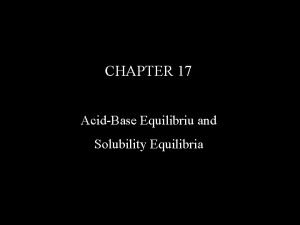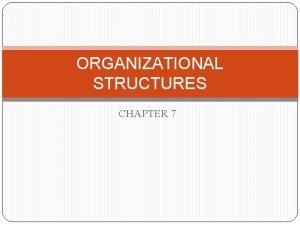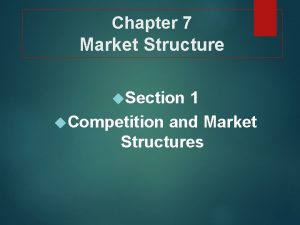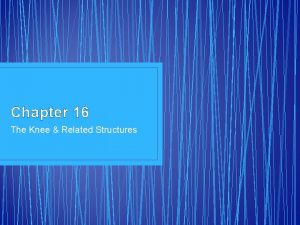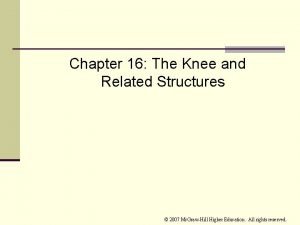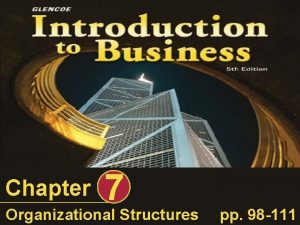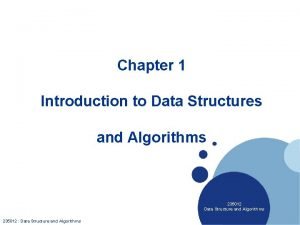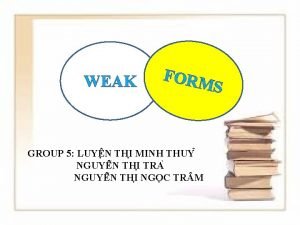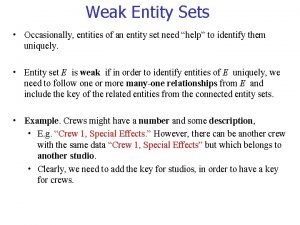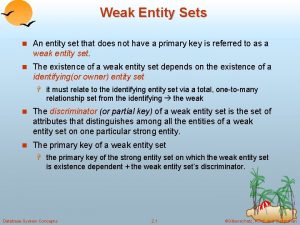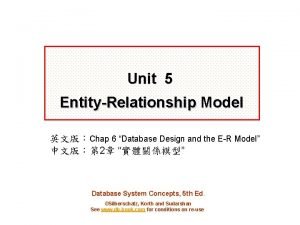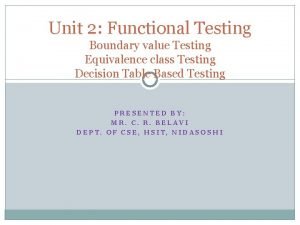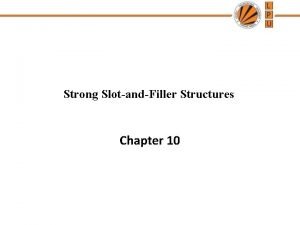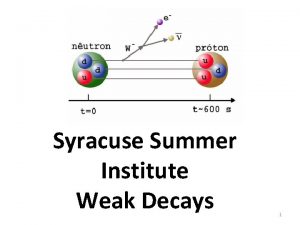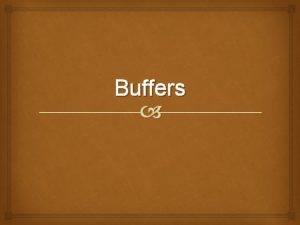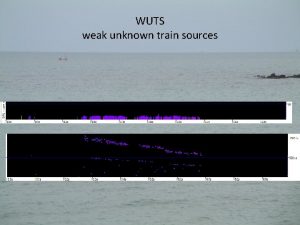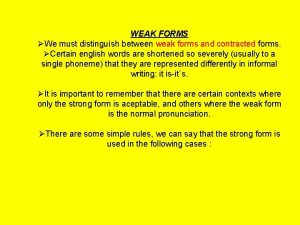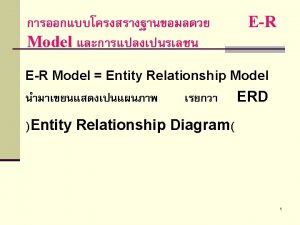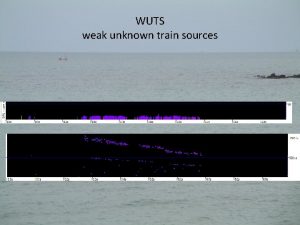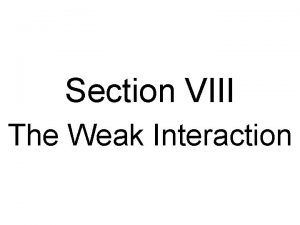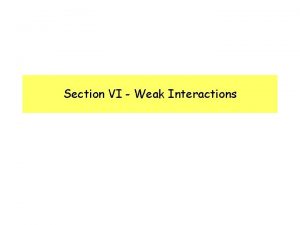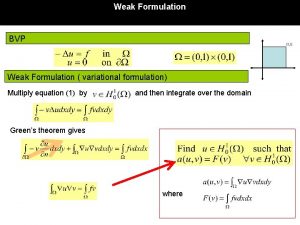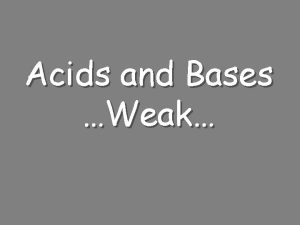Weak SlotandFiller Structures Chapter 9 Weak SlotandFiller Structures
























- Slides: 24

Weak Slot-and-Filler Structures Chapter 9

Weak Slot-and-Filler Structures ì Index assertions by the entities they describe. ì Make it easy to describe properties of relations. ì Are a form of object-oriented programming. ì Support both monotonic and Nonmonotonic inference. 208

Semantic Networks • The idea behind a semantic network is that knowledge is often best understood as a set of concepts that are related to one another. The meaning of a concept is defined by its relationship to other concepts. • A semantic network consists of a set of nodes that are connected by labeled arcs. The nodes represent concepts and the arcs represent relations between concepts.

Common Semantic Relations INSTANCE: X is an INSTANCE of Y if X is a specific example of the general concept Y. Example: Elvis is an INSTANCE of Human ISA: X ISA Y if X is a subset of the more general concept Y. Example: sparrow ISA bird HASPART: X HASPART Y if the concept Y is a part of the concept X. (Or this can be any other property) Example: sparrow HASPART tail

A Semantic Network 209

6

Representing Nonbinary Predicates Unary Predicates can be rewritten as binary ones. could be rewritten as N-Place Predicates becomes 210

A Semantic Net Representing a Sentence “John gave the book to Mary. ” 211

Some Important Distinctions First try : Second try : Third try : 212

Partitioned Semantic Nets a) b) c) d) The dog bit the mail carrier. Every dog has bitten a mail carrier. Every dog in town has bitten the constable. Every dog has bitten every mail carrier. 213

Advantage • Semantic nets have the ability to represent default values for categories. • Semantic nets convey some meaning in a transparent manner. • Semantic nets are simple and easy to understand. • Semantic nets are easy to translate into PROLOG. 11

Disadvantages • Links between the objects represent only binary relations. For example, the sentence Run(Chennai. Express, Chennai, Bangalore, Today) cannot be asserted directly. • Some types of properties are not easily expressed using a semantic network. For example: negation, disjunction, and general non-taxonomic knowledge. • There is no standard definition of link names. 12

Frames • A frame represents an entity as a set of slots (attributes) and associated values. • Each slot may have constraints that describe legal values that the slot can take. • A frame can represent a specific entity, or a general concept. • Frames are implicitly associated with one another because the value of a slot can be another frame.

frames 14

A Simplified Frame System 214

A Simplified Frame System (Cont’d) 215

A Simplified Frame System (Cont’d) 216

Representing the Class of All as a Metaclass Teams 217

Representing the Class of All as a Metaclass (Cont’d) Teams 218

Classes and Metaclasses 219

Representing Relationships among Classes 220

Representing Relationships Classes (Cont’d) among 221

Slots as Full – Fledged Objects We want to be able to represent and use the following properties of slots (attributes or relations) : The classes to which the attribute can be attached. Constraints to either the type or the value of the attribute. A value that all instances of a class must have by the definition of the class. A default value for the attribute. Rules for inheriting values for the attribute. Rules for computing a value separately from inheritance. An inverse attribute. Whether the slot is single-valued or multivalued. 222

Thank you !!! 24
 Indicator used in strong acid and weak base
Indicator used in strong acid and weak base Weak acid and weak base reaction
Weak acid and weak base reaction Weak acid and weak base
Weak acid and weak base Function of homologous structure
Function of homologous structure Chapter 7 organizational structures
Chapter 7 organizational structures Lesson 1 competition and market structures
Lesson 1 competition and market structures Chapter 7 section 3 structures and organelles
Chapter 7 section 3 structures and organelles Chapter 16 worksheet the knee and related structures
Chapter 16 worksheet the knee and related structures Chapter 16 worksheet the knee and related structures
Chapter 16 worksheet the knee and related structures Chapter 7 organizational structures
Chapter 7 organizational structures Data structures chapter 1
Data structures chapter 1 Chapter 7 market structures vocabulary
Chapter 7 market structures vocabulary Chapter 7 market structures
Chapter 7 market structures Chapter 7 section 3 structures and organelles
Chapter 7 section 3 structures and organelles You are my strength when i am weak
You are my strength when i am weak H2so4 strong or weak
H2so4 strong or weak Weak and strong syllable
Weak and strong syllable Weak forms in sentences examples
Weak forms in sentences examples Weak entity
Weak entity Weak entity set example
Weak entity set example Strong ai vs weak ai
Strong ai vs weak ai Database er diagram exercises with solutions
Database er diagram exercises with solutions =count(a1:d4)
=count(a1:d4) Solubility
Solubility Strong acid strong base titration curve
Strong acid strong base titration curve

